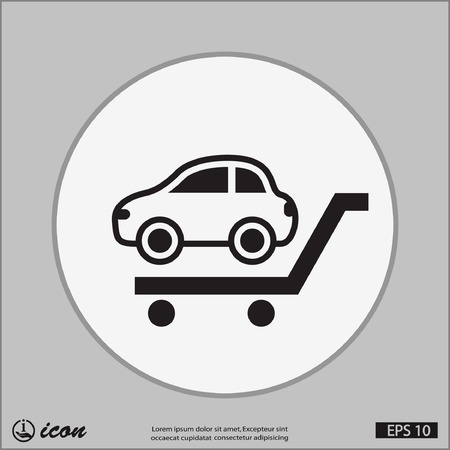Understanding Engine Oil Basics
If you want your car to run smoothly for years, understanding engine oil is a must. Think of engine oil as the lifeblood of your vehicle—it keeps all those moving metal parts lubricated, reduces friction, helps cool the engine, and prevents dirt and sludge from building up inside. But not all engine oils are created equal. In the U.S., you’ll find three main types on the shelf: conventional, synthetic, and synthetic blends.
Conventional Oil
This is your classic motor oil, refined directly from crude oil. It’s typically the most affordable option and works just fine for older cars or vehicles with simple engines that don’t experience extreme conditions. However, it doesn’t offer the high-performance benefits that some modern engines require.
Synthetic Oil
Synthetic oils are engineered in labs for maximum performance. They’re designed to withstand higher temperatures and provide better protection against wear and tear. If you drive in extreme climates, tow heavy loads, or own a newer model with advanced engine technology, synthetic oil is often worth the extra investment.
Synthetic Blends
Synthetic blends offer a middle ground—they combine some of the benefits of synthetics with the cost-effectiveness of conventional oils. If you want improved performance without paying full price for a pure synthetic, blends are a solid option for many American drivers.
Why Engine Oil Choice Matters
Your choice of engine oil isn’t just about ticking off a maintenance checklist; it directly impacts your car’s lifespan and performance. The right oil keeps your engine clean, efficient, and protected—helping you avoid costly repairs down the road. Whether you’re cruising down Route 66 or stuck in L.A. traffic, picking the right engine oil gives you peace of mind every time you turn the key.
2. Decoding Oil Labels and Viscosity Ratings
If you’ve ever stared at rows of engine oil bottles in an auto parts store, you know how confusing those numbers and letters—like 5W-30 or 10W-40—can be. Let’s break down what these codes mean, why viscosity matters for your daily driving, and what key things you should check on the oil bottle before making your purchase.
Understanding Oil Viscosity Numbers
The numbers and letters on the oil label refer to the oil’s viscosity rating, set by the Society of Automotive Engineers (SAE). Viscosity is basically how thick or thin the oil is, which affects how well it flows through your engine at different temperatures.
| Oil Grade | What It Means | Best For |
|---|---|---|
| 5W-30 | Flows like a 5-weight oil in winter (W = winter), but protects like a 30-weight oil when hot | Most modern cars, all-season use, moderate climates |
| 10W-40 | Thicker at high temps compared to 5W-30; better protection in older engines or hotter conditions | Older engines, high mileage cars, warmer climates |
| 0W-20 | Very thin at cold starts, improves fuel economy, fast flow in cold weather | Newer vehicles designed for low-viscosity oils, cold climates |
What Do the Letters Mean?
The “W” stands for “winter.” The number before the W tells you how the oil flows at cold temperatures (the lower the number, the easier it flows when you start your car on a chilly morning). The number after the W shows how thick the oil remains once your engine heats up. For example, 5W-30 means good cold start performance and solid protection when your engine’s running hot.
Why Viscosity Matters for Real-Life Driving
If your oil is too thin, it won’t protect engine parts from wear. Too thick? Your engine has to work harder to pump it, which can affect fuel economy and performance. Choosing the right viscosity ensures smooth startups in winter and reliable protection during summer road trips or stop-and-go traffic.
What to Look for on an Oil Bottle
- Viscosity rating: Always match this to your vehicle owner’s manual recommendation.
- API service symbol: Look for a “starburst” or “donut” symbol showing that the oil meets American Petroleum Institute standards.
- Synthetic vs. conventional: Synthetic oils offer better performance in extreme temperatures and longer life between changes.
- Additive claims: Some oils have extra detergents or conditioners—great for older engines or specific driving needs.
Quick Tip:
If in doubt, always stick with what your car manufacturer recommends. Using the wrong viscosity can void warranties and cause engine damage over time. When shopping for oil in the U.S., these ratings and symbols are standardized across major brands—just read the label carefully and you’ll be set for smoother rides ahead!

3. Considering Your Vehicle and Driving Habits
When it comes to picking the best engine oil for your car, it’s not just about grabbing whatever’s on sale at your local auto parts store. You’ll want to think about your car’s age, make, mileage, and—most importantly—how and where you drive. These factors can make a big difference in both performance and long-term engine health.
Car Age and Make Matter
Older vehicles often need different oils than brand new models. If you’re driving an older car (especially over 75,000 miles), high-mileage oil formulas with added conditioners can help prevent leaks and reduce oil consumption. On the other hand, newer vehicles usually perform better with synthetic or synthetic blend oils designed for modern engines. Always check your owner’s manual for specific recommendations from your manufacturer.
Mileage: High vs. Low
If your ride has racked up serious mileage, consider oils labeled “high mileage.” These are made to help protect aging engine seals and minimize wear. For cars that don’t see much action—maybe you only drive on weekends or have a short commute—you might get by with conventional oil, but be sure to change it regularly as recommended.
How & Where You Drive
Your daily driving habits play a huge role in your oil choice:
- City Driving: Stop-and-go traffic causes more engine stress and heat buildup. Synthetic oils handle this better thanks to their stability at higher temperatures.
- Highway Cruising: Consistent speeds are easier on your engine, so conventional or synthetic blend oils may work just fine unless you’re clocking lots of miles.
- Extreme Weather: If you live in areas with freezing winters or scorching summers, look for oils with viscosity ratings suited for those temps (like 5W-30 for cold climates or 10W-40 for hot ones). Synthetic oils generally offer better protection across a wider temperature range.
Your Owner’s Manual Is Gold
No matter what, always double-check your owner’s manual before making a final decision. Manufacturers know what works best for your specific engine, so their recommendations should be your go-to guide whenever you’re in doubt.
4. Manufacturer Recommendations: Your Car’s User Manual
If you’re wondering which engine oil to pick, your best source of truth is your car’s user manual. Automakers spend countless hours testing and engineering engines to work best with specific oil types and viscosities. That means following the manufacturer’s recommendation isn’t just a suggestion—it’s crucial for your car’s longevity and performance.
Why Does It Matter? Using the recommended oil spec ensures that your engine gets the right protection against wear, sludge, and overheating. It also helps maintain fuel efficiency and emission standards set by your vehicle maker. Straying from these specs can lead to reduced engine performance, more frequent repairs, or even voided warranties.
Where to Find Oil Specs in Your Car
You’ll typically find the recommended oil type, grade, and sometimes brand in several places:
| Location | What You’ll Find |
|---|---|
| User Manual (Owner’s Handbook) | Detailed info on viscosity (e.g., 5W-30), oil type (synthetic or conventional), and service intervals |
| Under the Hood (Oil Cap) | Often stamped with required viscosity (e.g., SAE 0W-20) |
| Automaker Website | Digital versions of manuals or quick reference guides for oil specs |
| Dealership Service Department | Professional advice based on your VIN and driving conditions |
The Importance of Sticking to Recommendations
When you follow the automaker’s oil specification, you’re protecting more than just your engine—you’re also safeguarding your warranty coverage. Most manufacturers require proof that you’ve used the correct oil during maintenance; using the wrong type can mean paying out-of-pocket for costly repairs later.
Quick Tips for Staying on Track:
- Double-check specs before every oil change.
- If you can’t find your manual, look up your car model on the manufacturer’s website.
- Keep receipts and records of oil changes with correct product details.
- If in doubt, call your local dealership for guidance.
Your Bottom Line:
Sticking to what’s written in your car’s user manual keeps your engine happy, reliable, and under warranty. Don’t guess—check the manual and use only what’s recommended for peace of mind on every drive.
5. Changing Oil: DIY vs Professional Help
Deciding between changing your car’s engine oil yourself or heading to a professional shop can impact your wallet, schedule, and peace of mind. Here’s how to make the right call for your situation.
When Does DIY Make Sense?
If you’re comfortable with basic car maintenance, have the right tools, and enjoy getting your hands a little dirty, changing your own oil can save you money and give you full control over the process. DIY oil changes are a good fit if you drive an older vehicle that’s easy to access underneath or if you want to use a specific brand or type of oil not commonly stocked by quick-lube shops. Plus, there’s a certain satisfaction in taking care of your own ride.
When Should You Go to a Shop?
Sometimes it’s best to let the pros handle it. If your vehicle is under warranty, requires special tools, or has a complicated oil filter location, visiting a certified mechanic or dealership can save time and prevent costly mistakes. Professional shops often include multi-point inspections as part of the service, which can help catch other issues early. It’s also more convenient if you’re busy or don’t have space at home for car maintenance.
Spotting Signs You Need an Oil Change Sooner
No matter how you get your oil changed, knowing when it’s due is key. Don’t just rely on mileage—watch out for warning signs like dark or gritty oil on the dipstick, increased engine noise, the oil change dashboard light, or exhaust smoke that seems unusual. If you drive in extreme temperatures, tow heavy loads, or make lots of short trips (which is common in many parts of the U.S.), you might need to change your oil more often than the manual suggests.
Bottom Line
Choosing between DIY and professional help comes down to your comfort level, your car’s needs, and your lifestyle. Whatever route you pick, stay proactive about oil changes to keep your engine healthy and avoid bigger headaches down the road.
6. Popular Brands and Where to Buy
When it comes to choosing engine oil in the U.S., sticking with reputable brands is always a smart move. Popular, reliable brands that American drivers trust include Mobil 1, Castrol, Pennzoil, Valvoline, and Royal Purple. These brands have a solid track record for quality, meet industry standards, and are widely recommended by mechanics and auto experts.
Where Most Americans Shop for Engine Oil
You have plenty of options when it comes to buying engine oil. The most common places include:
Auto Parts Stores
AutoZone, O’Reilly Auto Parts, and Advance Auto Parts are go-to spots for many car owners. Staff can answer questions and help you find the right oil for your vehicle.
Big-Box Retailers
Walmart, Costco, and Target usually carry a wide selection at competitive prices. Plus, you can often pick up other car essentials in one trip.
Online Retailers
Sites like Amazon, Walmart.com, and even the websites of auto parts stores make it easy to compare prices, read reviews, and have products shipped right to your door.
Tips to Avoid Counterfeit Products
- Buy from trusted retailers: Stick to well-known stores or official brand websites.
- Avoid suspiciously low prices: If a deal seems too good to be true, it probably is.
- Check packaging carefully: Look for proper seals, correct labels, and intact packaging. Counterfeit oils sometimes use poorly printed labels or unusual containers.
Selecting engine oil from a reputable brand—and buying from trustworthy sources—will help ensure your engine stays protected and your car runs smoothly.
7. Frequently Asked Questions about Engine Oil
Can I Switch Oil Types (Conventional, Synthetic, or Blend)?
Absolutely! Switching between conventional, synthetic, or synthetic blend oil is totally fine for most modern vehicles. Just make sure you choose the right viscosity and specification recommended in your owners manual. Some older engines may benefit from sticking to one type, but for the average daily driver, swapping types won’t harm your engine as long as you follow manufacturer guidelines.
How Often Do I Really Need to Change My Oil?
This is a classic question. While the old rule was every 3,000 miles, many newer cars can go 5,000 to even 10,000 miles between changes if you’re using synthetic oil. Always check your car’s manual for the specific interval—it’s based on your vehicle and driving habits. If you do a lot of stop-and-go driving or tow heavy loads, you might need more frequent changes.
Does Engine Oil Expire?
Engine oil does have a shelf life—typically around five years if it’s sealed and stored properly. Once opened or poured into your engine, it’s best to use it within the recommended interval. Old oil can lose its effectiveness and may not protect your engine like fresh oil does.
Will Using “Better” Oil Improve My Car’s Performance?
Using a higher-quality oil (like full synthetic) can help with engine protection, smoother performance, and better fuel economy in some cases. However, using an oil that isn’t recommended by your manufacturer won’t necessarily give you extra benefits—stick to what’s specified for your car for best results.
What Happens If I Use the Wrong Viscosity?
If you use an oil that’s too thick or too thin compared to what your car needs, it can affect lubrication and engine efficiency. In cold weather, thick oil might not flow well; in hot weather, thin oil could break down faster. It’s best to stick with the viscosity grade listed in your owner’s manual.
Bottom Line:
Choosing the right engine oil comes down to following your vehicle manufacturer’s recommendations and considering how and where you drive. When in doubt, consult a trusted mechanic or refer back to your car’s manual—it’ll always point you in the right direction!


